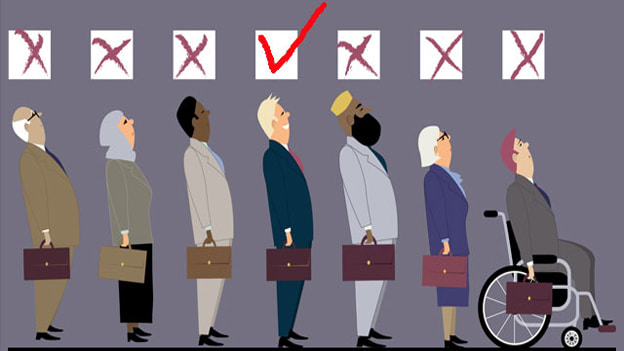70Views
Charting the Future to the Post Pandemic
Dr Sachin Deshmukh
COVID-19 was identified in December 2019 and declared as a pandemic by World Health Organization in March 2020. Confirmed cases of COVID-19 as on 9th May 2020 is approaching the four million mark and the situation has become horrific across the globe. Many economies of the world have almost come to a standstill. COVID-19 will force companies to re-model their businesses as we all sit at home in lockdown, re-assessing and re-imagining modes of supply, consumption and productivity. For instance, in India, the shift from cash to digital payments is clearly visible. This can have major shift in business models of banks and other financial institutions. As people are working remotely from their homes, tools like Microsoft’s Teams, Zoom and Slack are supporting them to interact with each other. Those companies that are using cloud computing are able to keep up with their work as employees working from home get easy, rapid and secured access to business applications. Supply chains of businesses will have to reconfigure themselves in real time. Grocery stores struggle to manage large queues of disgruntled customers. Smart restaurants are restructuring their supply chains to serve end customers.
As COVID-19 cases are on the rise, there is a need to find solutions to stop its spread and bring the lives of people back on normal track. We need to embrace the tools of tomorrow to secure our future.
Role of Artificial Intelligence in Curbing COVID 19
Many would agree artificial intelligence (AI) can be an effective tool to tackle this global issue. AI is a combination of Machine Learning, Natural Language Processing, and Computer Vision which can train computers to use statistical models for pattern recognition and prediction. AI can be used to diagnose, predict and treat COVID-19 and curb the global economic distress. With this pandemic affecting more than 90% countries of the world, there is a scramble to use AI to find effective solutions to curb the spread of the virus.
The areas in which AI can contribute to curb the impact of COVID-19 are
(A) early warnings of infection attack
(B) tracking and predicting positive cases
(C) creating dash boards for graphical presentation of data
(D) diagnosis and treatment
(E) social control.
AI can contribute by predicting the location of next outbreak. Blue Dot, a Canadian company has attempted to do so and was the first company to report the outbreak in December 2019. The Imperial College London and BenevolentAI have reported that a drug approved for rheumatoid arthritis, baricitinib, might be effective against the virus. A Hong Kong based company, Insilico Medicine has claim that its AI algorithms had designed six new molecules that could halt the spread of the virus. All these are the examples of the applications of AI.
Artificial intelligence (AI) is used by many countries to analyze personal, travel and clinical data to develop predictive models that can inform infection and mortality risk assessments. Several AI models can be used to speed up the diagnostic rates by interpreting radiographic results in a fraction of time. Application of artificial intelligence can be a welcome tool as it can assist hospitals in decision making of bed allocation and improve the management of flow of patients. Russia, for instance, is using AI’s surveillance power to help break the chains of viral transmission across the globe. It is monitoring citizens with CCTV cameras and facial recognition. Israel is using AI driven contact tracing algorithms to send citizens personalized text messages, instructing them to isolate after being near to someone with a positive diagnosis. South Korea has data on credit card payments, mobile location, CCTV, facial scans, medical records and temperature monitors, which is analyzed continuously to trace positive cases and enforce positive lockdowns.
AI can be used to predict the structure of SARS COV-2 related proteins and help researchers to identify existing drugs that may curb the growth of the virus. AI can assist in identifying new compounds that may be promising for drug development, improve diagnosis and support the development of a new vaccine.
COVID 19 – Changing Consumer Behavior Permanently
Covid-19 has impacted every industry. Consumer attitudes, behavior and purchasing habits are changing and many of these new ways will remain post-pandemic. In this period of lockdown and social distancing, consumers are embracing digital commerce to shop. This new behavior will transform the industry’s future as consumers are thinking differently, and buying differently in many ways. In this pandemic, consumers are concerned about their health and their buying has become centered on the most basic needs, hygiene and staple products while the non essential categories are experiencing a steep fall. Factors that influence brand choices are also changing as “buy local” trend accelerates. Online shopping is also experiencing a boost and the trend is likely to continue post outbreak. Consumers are more conscious of what they are buying, and are trying to buy more sustainable options. Companies will have to deploy their marketing analytics resources to understand this shift in consumer buying behavior.
COVID 19: Lockdown Impact on Employment
The slowing down of the world economies has thrown people out of their jobs and has become a major concern. Now the question is, when these economies will come back on track and provide livelihood to people? The question might be intriguing to all the students who will complete their education in the next two years and looking for placement.
Who will be the Winners in Post Pandemic Economy?
In post pandemic period, the ways the companies work and operate will change. An individual who will succeed in post pandemic time is the one who can adapt to ever evolving workplaces and have the ability to continuously upgrade his/her skills. Some of the job skills that companies will look for are
- Technology Skills: Comapanies will try to be more resilient to future outbreaks. Therefore, technologies like artificial intelligence, robotics, augmented and virtual reality and internet of things will be the choice of companies. Automation and AI will enhance the resilience of supply chains.
- Data Analytics: Machine learning and data analytics are estimated to offer one-third of the total jobs that will be available post pandemic. With huge data available, Individuals with analytical skills can provide solutions to crucial business problems.
- Digital and Social Media Marketing: Changes in attitudes, sentiments and buying behavior in the pandemic period are already being observed in many markets. Skills in search engine optimization (SEO), developing online campaigns and web analytics that will help companies to build their brands will be the preference of employers.
- Problem Solving and Critical Thinking: Individuals who can think critically and help companies to solve business problems will have better chance of getting hired.
- Emotional Intelligence: Demand for emotional intelligence skills across industries is increasing. This soft skill enables employees to recognize their own strengths and weaknesses, and understand emotions of company’s client. Individuals with strong emotional quotient will be preferred by companies.
- Commitment to Lifetime Learning: The world Economic Forum has predicted that 35% of the skills that are deemed essential today, may change in post pandemic period. Job market situation will be tighter than before and individuals with advanced job skills are likely to survive or may struggle less to find jobs. There is only one way to be job secured in post pandemic and that is commitment to lifetime learning.
Individuals can upgrade their skills by attending free and open online courses (MOOC). Treat lockdown as your opportunity to improve your skills so that you are ready for the post pandemic job market.
For further queries get in touch with us.


